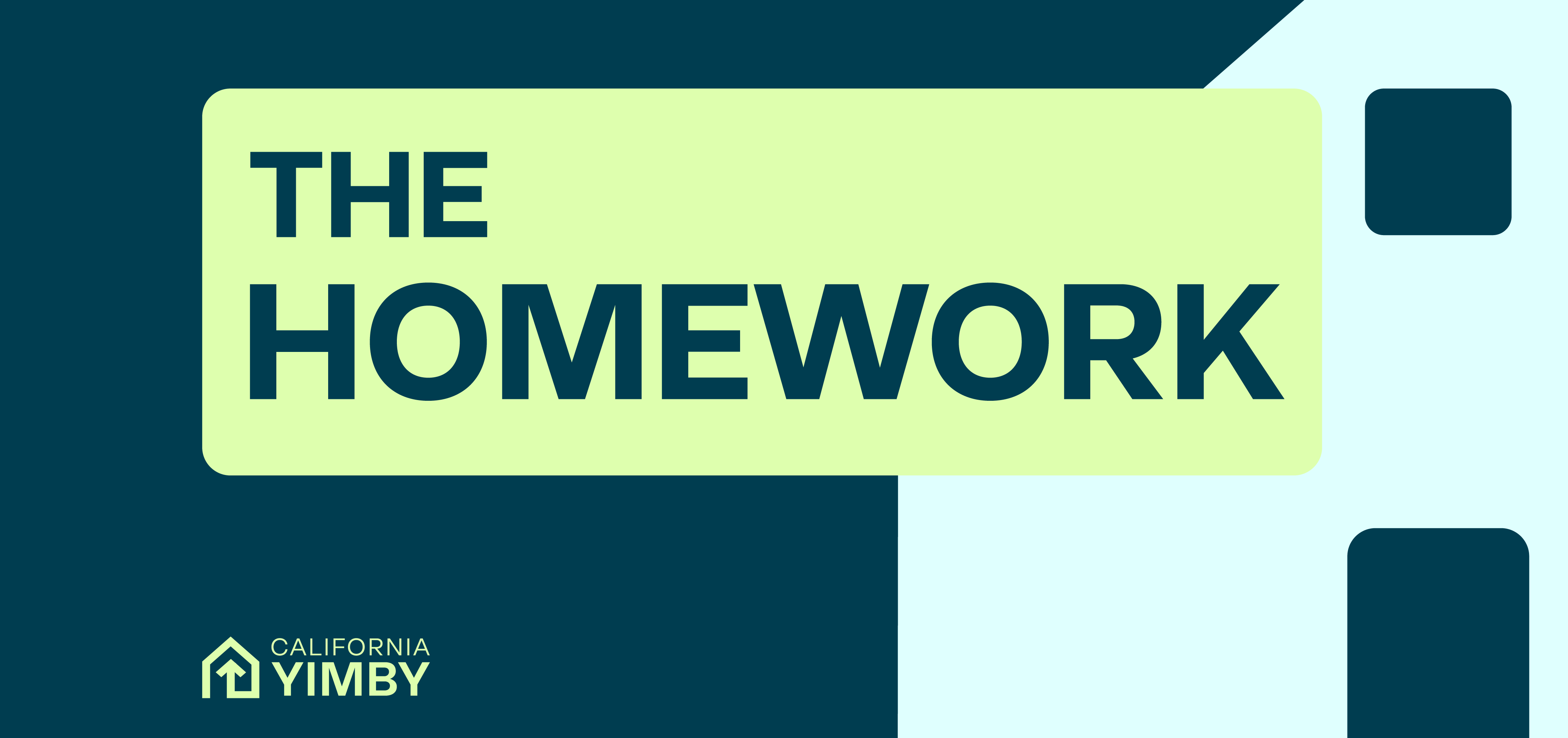The HomeWork: February 18, 2020

Welcome to the February 18, 2019 edition of The HomeWork, the official newsletter of California YIMBY. In each edition, we aim to support grassroots YIMBYs with the most up-to-date thinking on how to end the housing shortage. The HomeWork offers top news clips, cutting-edge research by leading academics in housing and related studies, and the latest writings from the California YIMBY team on our blog.
We welcome your ideas and feedback — send story tips and ideas to Homework@cayimby.org.
Did someone forward this email to you? Sign up to get it here.
From the Building
A roundup of hot legislative action from our team in Sacramento:
SB 50 may be done (for now), but there are many other housing-related proposals making their way through the legislative process. While none of these other bills rise to the challenge of the housing crisis with the same force as SB 50, they’re still worthy of support and passage.
You can see our preliminary list of all housing bills, as well as some major transportation bills, here. Keep an eye on:
- Assemblymember Grayson’s AB 1484 and AB 1924: These are perhaps the most important housing production bills, which would reform how fees are assessed on housing.
- Assemblymember Chiu’s AB 2057: Seamless Bay Area- unite Bay Area transit under a single operator.
- Senator Umberg, SB 999: expanding rent control for some mobilehome owners
Legislators have to introduce new bills by Friday, February 21st, so check back for new bills after then.
Houser Headlines
Good with coffee and avocado toast:

- Corporate Landlords Aren’t the Real Culprit
- Build Build Build Build Build Build Build
- Sweeping solutions, not half measures, needed to fix California’s housing crisis
- Across the Globe, Urban Sprawl Is Spreading
A Room for Views
California YIMBY brings you summaries of cutting-edge research from the nation’s top housing experts. In this edition:
California Cities Have Room to Grow—Faster.
There are two policy questions at the heart of California’s housing crisis: how much new housing is legally allowed in the state’s affluent cities — what’s known as the “zoned capacity” — and how does the actual process of permitting new homes determine how many get built? So far, it has been difficult to disentangle issues of zoned capacity from city permitting processes, but the indefatigable UCLA trio of Paavo Monkkonen, Michael Lens, and Michael Manville are on the case.
In a hot new paper from the Terner Center, the professors analyze housing regulations and zoned capacity in cities’ Housing Elements from their general plans to understand just how the regulatory system suppresses homebuilding in areas of high demand.
Key Takeaways:
- Regardless of regulations, cities with lower rents build less housing because there is less demand. However, cities with relatively fewer jobs did permit more housing overall due to higher zoned capacity. Therefore, the state should enable more homebuilding in high-demand areas that are experiencing higher rents by upzoning them.
- Process and zoned capacity are inextricably linked. More process alone does not reduce homebuilding; it’s a function of allowable density, too.
- Zoning is incredibly impactful on housing production, particularly for multifamily housing.
Spicy Guacamole


Rockstar YIMBY
“I’ve moved about 11 times and I’ve lived with over 20 roommates since 2014, entirely because of the high cost of rent.”
— Meet Muhammad, California YIMBY’s Data & Digital Associate
Share the good word
Thanks for reading to the end of the newsletter. Like what you read or have feedback?
Reply to this email, pass it along, and encourage your friends to sign up.


